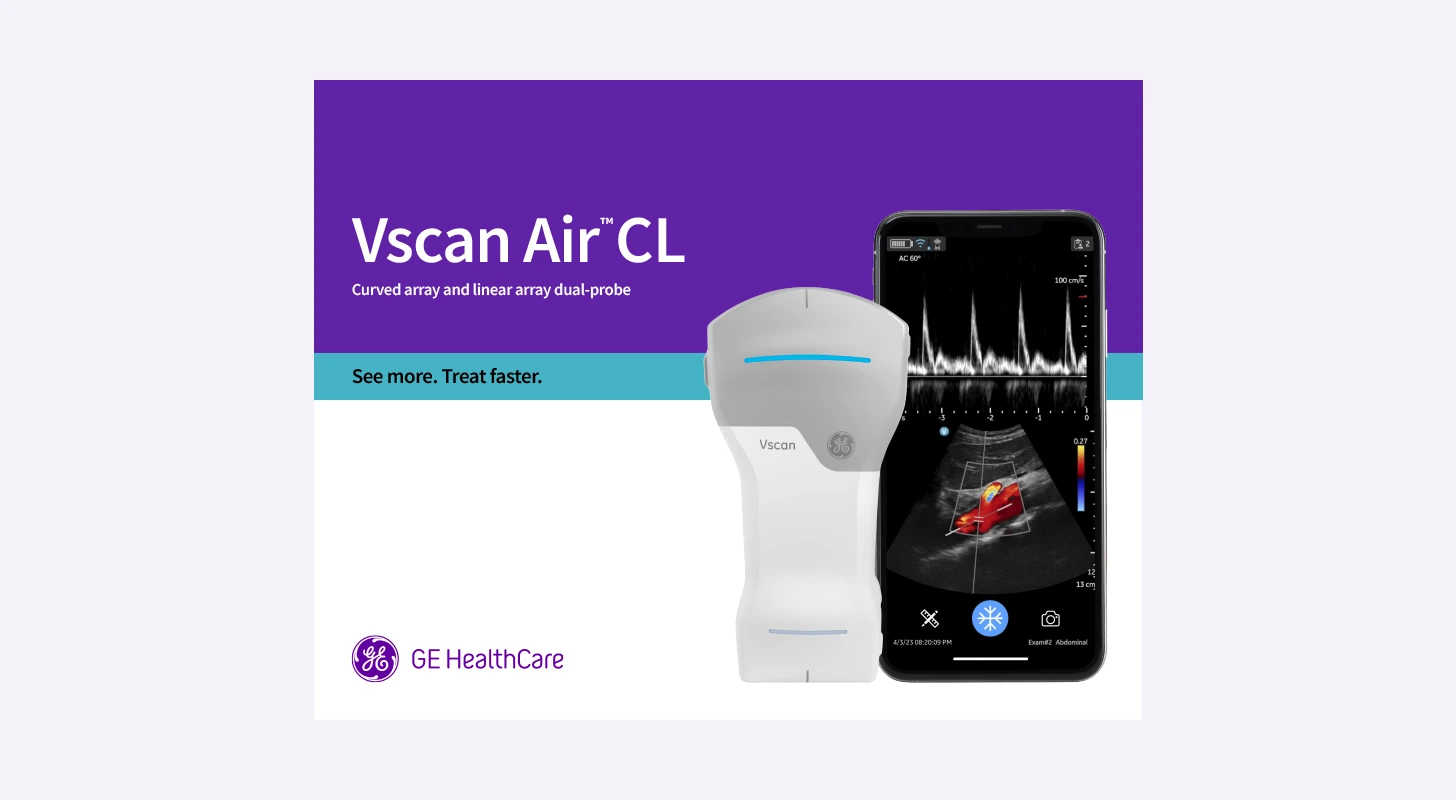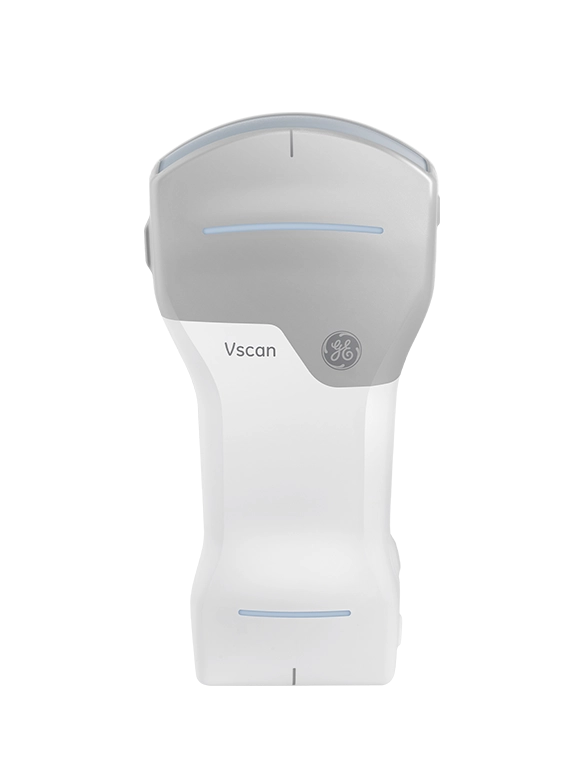How are traditional bladder scanners used and how are they different from point of care ultrasound for automated bladder volume measurements?
The assessment of urinary retention by measuring post-void volumes non-invasively with a bladder scanner is an established alternative to urethral catheterizations and has been shown to reduced indwelling catheter use and catheter associated urinary tract infections (CAUTI)1. Today, it is common for physicians, nurses, and medical technicians to perform basic bladder volume measurements with either a dedicated bladder scanner or a full ultrasound console system. More often, the important task of catheter placement, management, and removal is performed by nurses, which has led to the increased adoption of dedicated bladder scanners for quick and easy bladder volume calculations. However, the entire catheter management workflow may benefit from additional imaging that a dedicated bladder scanner cannot fulfill. Dedicated bladder scanners are limited in their indications for use and thus can offer only a bladder volume measurement. Additional imaging needs can be provided by point of care ultrasound – like Vscan Air. As a diagnostic handheld ultrasound system, it offers expanded indications for use and high-quality imaging capabilities to provide immediate visualization insights that can support assessment of unsuccessful catheter placements, urinary or renal concerns, and much more. Surpassing traditional bladder scanners in versatility, the expanded clinical utility with a pocket sized and easy to use device, makes Vscan Air an exciting new option for both nurses and providers. For those interested in switching from a dedicated bladder scanner to real time diagnostic ultrasound, Vscan Air offers an easy to use 2-step protocol for an AI powered automatic urinary bladder volume measurement and calculation. The automatic bladder volume calculator delivers convenience by reducing manual work and eliminating the need to remember the appropriate formula. It is vital that care providers have the best tools available to support their clinical decision making for the many needs that can arise at the point of care. With a tool like Vscan Air, care teams can experience greater flexibility and convenience in a single device that sets it apart from dedicated bladder scanners.
How much does a bladder ultrasound cost and what should I consider when purchasing a bladder scanner solution?
Bladder ultrasound can vary a great deal in price based upon the brand and the type of solution selected. When considering which bladder ultrasound is right for you, there are some criteria that should be considered:
Clinical versatility: Bladder ultrasound is available in a range of options from small handheld units with limited indications for use, up to full cart-based ultrasound systems with advanced imaging capabilities. Point of care ultrasound systems have emerged as an excellent middle ground option for bladder ultrasound. These systems have greater clinical utility than dedicated bladder scanners, while still offering portability for convenient bladder scans in both in-patient and out-patient settings. Point of care systems, like Vscan Air, offers imaging capabilities for many types of clinical assessments, including automated bladder volume calculations all in a single ultra-portable handheld device.
Portability and form function: There are two primary options for bladder scanners in terms of portability. One option includes roll stands or cart-based systems. This option often comes with storage and although they will generally move in a department easily, they may make transport via an elevator or stairway more challenging. The other option is a more portable option for either placing on a tabletop or is completely handheld. This option may be better suited for where space is limited or when hand carrying is more convenient. Both options have their pros and cons, and evaluating your clinical workflow will help you determine the best option for your department.
Ease of use: Bladder scanning is generally considered a simple process, so you’ll want to consider a device solution that is easy to use to keep it a simple process. Bladder scanning complications can arise when the clinician can’t visualize the bladder. This often leads to uncertainty about the accuracy of the bladder volume and creates the need to re-scanning multiple times. A bladder ultrasound solution should help provide tools for confident use so that bladder volume calculations can be achieved in a short amount of time. Vscan Air offers a 2-step protocol to guide users through a bladder ultrasound, AI to reduce manual work with measurements and calculations, and crystal-clear image quality so users can clearly see what they are measuring.
Can a dedicated bladder scanner differentiate urine in the bladder from abdominal fluid?
Ultrasound can help clinicians assess urinary retention with bladder volume measurements similar to a dedicated bladder scanner, but unlike a traditional bladder scanner, diagnostic ultrasound can help clinicians visualize the catheter placement and malfunctions, bladder pathology like bladder stones or other masses, ureteral jets to rule out a complete obstruction, and free fluid in the pelvis like an ascites. Particularly with extended critical illness, patients can develop pelvic ascites and a dedicated bladder scanner is not indicated for use on patients with an ascites. Dedicated bladder scanners may measure the ascites fluid volume, which could lead to unnecessary catheterization and infection. With diagnostic ultrasound, like Vsan Air, users can differentiate abdominal fluid from fluid within the bladder. This sets ultrasound and Vscan Air apart of dedicated bladder scanners.
When are bladder ultrasounds performed and how is this information used in clinical decision making?
Urinary retention and bladder distension could be caused by an enlarged prostate, bladder obstruction, infection, surgery, neurologic disorder, foley malfunction or various medications. When retention is suspected, bladder ultrasound can aid in determining the cause and can provide a post-void urinary bladder volume. Typically, post void residual volumes greater than 200 ml is considered abnormal and less than 200 ml is considered normal.4 Local hospitals have their own retention management guidelines and CAUTI bundles to make these determinations. Vscan Air is offering a new kind of bladder scanner, one with increased versatility that has something for the entire care team and for specialties including: urology, anesthesia, family medicine, home care, geriatrics, oncology, emergency, critical care and more. When patients show symptoms of abdominal pain, oliguria, nausea, vomiting, fever, or feeling of a full bladder, clinical concerns may rise for urinary, renal, or ovarian diseases or pathology. With diagnostic ultrasound at the point of care, like Vscan Air, physicians can conduct assessments and further inform their differential diagnosis. This can help detect urinary retention and more, including detecting signs of ovarian cysts symptoms, hydronephrosis, or other chronic kidney diseases.
How can ultrasound help with routine catheter use?
Routine catheter placements may not demand the need for ultrasound, however for catheter malfunctions, troubleshooting by visualizing with ultrasound can help clinicians identify the cause. Reasons for catheter malfunctions can include empty bladders, misplacement of catheter tip, clogged catheter tip obstruction or debris, a kinked catheter or repeat attempts of re-insertion that can result in trauma and blood clotting.
Consider full diagnostic ultrasound to replace dedicated bladder scanners in your CAUTI bundle protocol to better manage appropriate indications for indwelling urethral catheter use as well as complicated catheter insertion troubleshooting. Going beyond urinary retention assessments and volume measurements, Vscan Air can give you more information throughout the catheterization process than a dedicated bladder scanner.

 Language
Language 
 Clinical Specialties
Clinical Specialties Products and Solutions
Products and Solutions Education
Education Language
Language










-Still-Image.webp)







 Belgium
Belgium  Bulgaria
Bulgaria  Croatia
Croatia  Czechia
Czechia  Denmark
Denmark  Deutschland
Deutschland  España
España  Estonia
Estonia  Finland
Finland  France
France  Greece
Greece  Hungary
Hungary  Ireland
Ireland  Italia
Italia  Latvia
Latvia  Lithuania
Lithuania  Luxembourg
Luxembourg  Netherlands
Netherlands  Norway
Norway  Österreich
Österreich  Poland
Poland  Portugal
Portugal  Romania
Romania  Slovakia
Slovakia  Slovenia
Slovenia  Sweden
Sweden  Schweiz
Schweiz  UK
UK 

